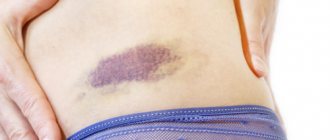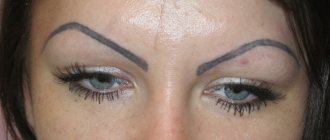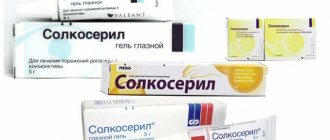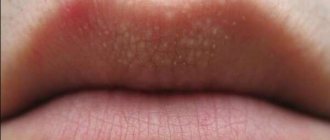The day on which sutures are removed after surgery depends on the type of sutures used by the surgeon. This method is the most ancient and widespread type of joining the edges of cuts on the body. Among the varieties, the seams are removable and immersed.
The main characteristics of the materials and components used to complete the operation have always been strength and reliability. The more complex the knot is formed, the better. In this case, the seam should not be voluminous. The larger it is, the more likely a negative reaction of the stitched tissues to it. Complications may begin. The volume of the node should be small. This way, the body will not distinguish what kind of foreign body is in it and will not react violently.
How long after surgery are sutures usually removed?
Understanding the wound healing process is important for optimal outcomes for any patient with a surgical wound. Essentially, when the edges of the skin are brought together with sutures after surgery, the fibrin gel acts as the original sticky gel to keep the opposing tissues stuck to each other. Over the next 3-4 days, new capillary blood vessels grow from the edges of the wound to bind the edges of the incision. Collagen is then produced by fibroblasts within this part of the wound.
While the sutures placed by the surgeon are securely close to the edges of the skin, it is the maturing collagen that provides real stability in the repaired wound. However, the strength of this repair takes time to develop depending on many factors including location, tension on the repaired wound, and the quality of the blood supply to the wound. Depending on these factors, wound support with sutures is critical for periods that can range from 5 days to more than 3 weeks.
Types of seams and their characteristics
Sutures are distinguished according to the timing of application. Delimit:
- Primary, which the surgeon applies immediately after surgery.
- Delayed primary can be applied either after a day or after a week.
- Provisional is a type of delayed primary, but here the standard dictates the application time of up to 3 days.
- Early secondary suture is used 2 weeks after surgery and a week after the primary suture.
- Late secondary – up to a month or more after surgery at the stage of scar development.
Immersed seams are permanent. Over time, they dissolve on their own without any residue. The material from which they are made is the small intestines of sheep. This thread is called catgut. It is not very strong, but is well accepted by the body. Removable seams are much more secure. The moment when the sutures are removed after surgery depends on the quality of the thread material. This usually occurs after the incision has healed. Removable threads are made from:
Surgical wounds can be closed with a very varied combination of both internal and external stitches. A wide range of factors influence the decision to close a wound. Wound closure technique should be discussed with all patients immediately after surgery as it often has a major impact on how patients care for their wounds.
Caring for patients with different types of wounds
These wounds, whether undertaken as simple procedures under local anesthesia or as more significant operations including flaps performed in the operating room, are properly cared for as follows. Remove all applied dressings the morning after surgery, wash freely under running water in the shower. Alternatively, a small amount of betadine may be applied or used in place of antibiotic ointment after completion of the tube. Pat the wound dry with a clean towel or cloth. . Wounds repaired with flaps are usually cared for in the same manner as described above.
- Silk or linen. They are natural.
- Nylon, nylon or mersilene are unnatural.
- Staples and special wire – metal.
The successful outcome of the operation largely depends on the correct placement of sutures. This determines normal blood circulation and is responsible for the absence of cavities in the wound, the appearance of which is undesirable. The optimal period for removing sutures after stitching the wound is up to 10 days.
The healing process is influenced by a number of factors:
Timing for suture removal
Conceptually, the flap can be thought of as transferring skin from an area of relative weakness to a defect. The transferred tissue is nourished by the main blood supply, which is transferred along with the skin. Because all skin is vascularized, wound healing is usually reliable and makes wound care easier.
Types of seams and their properties
Bilobed flap reconstruction after removal of basal cell carcinoma at the nasal tip. Apparently visible skin cancer is indicated by the dotted marks and the actual excision and planned flap indicated by the blue blue line above. Wound care consisted of routine showering and simple application of antibiotic ointment once daily from the first postoperative day. Sutures are usually removed after 6-8 days.
- Doctors remove the stitches from the operated areas of the face or neck, where there is good blood supply, for 4-5 days. And places where blood circulation is weak are usually left for up to 12 days. These are the feet or legs.
- If the incision becomes infected, the sutures in these areas are removed the next day after surgery, and the incision is healed openly. The remaining areas are freed from threads after a week.
- Some characteristics of the patient’s body also affect the process of suture removal. Everyone has their own time frame for wound healing. Tissue fusion in older people is particularly slow. They wear threads for up to 2 weeks. Patients with severe pathologies are also subject to medical reinsurance, since in a weakened state their body is not able to find the strength to heal wounds as quickly as possible.
- The depth of the wound incision and the complexity of the operation affect the duration of wearing the threads. Incisions after abdominal manipulation, except in cases where there is a large amount of fatty tissue, heal normally.
When the time comes to remove the sutures, the scar site is treated. Then the surgeon pulls the knot upward little by little, and when the thread embedded in the tissue appears, it is cut off. Extended wounds that have already grown together are not completely freed from stitches, but are done gradually, with a break of several days. At the end of the procedure, the suture is re-treated with an antiseptic and a special bandage is applied.
Processing and required materials
This provides faster recovery, superior aesthetic appearance and significantly less complex wound protection. Another key flap on the lower leg approximately 5 months after surgery. Full thickness skin grafts are used to repair facial wounds. A piece of skin with appropriate characteristics is obtained from the donor site, which itself can be closed directly with sutures and is usually located in a relatively inconspicuous place. The graft is then carefully attached to the original wound.
The essence of the problem
During surgery, soft tissue is dissected to open access to the lesion. The most common way to join the edges of cut tissue is to apply postoperative sutures. Depending on the type of operation and the size of the incision, the suture is performed in different ways and using different materials: polymer threads, metal staples, etc. The need for their application is dictated by the following requirements: maximum convergence of the edges and their fixation to ensure fusion, protection of the damaged area from external influences, minimization of the size of scars.
If there was a dressing on the sutures, replace it with a new, clean dressing and, if indicated, administer antibiotic therapy. Your provider should have advised you when you need your sutures removed. If not, contact your provider to make an appointment.
- Brush as close to the stitches as possible.
- Avoid using the towel directly on the stitches.
Medical staples are made of a special metal and are not the same as office clips.
Take care of staples and wounds as follows. Call your provider if you have questions or concerns about how to care for stitches or staples at home. You can take pain relievers such as ibuprofen as directed for pain at the wound site. Carry out medical checks to make sure the wound is healing properly.
- Brush as close to the brackets as possible.
- Avoid using the towel directly on the staples.
- Your supplier should have advised you when to remove the staples.
- If not, contact your provider to make an appointment.
- Do this carefully and avoid excessive exposure to water.
- Heal the wound properly to prevent subsequent scars.
Call your doctor immediately if.
After completion of treatment, sutures should be removed in a timely manner. If the procedure is performed too early, the tissue edges may separate due to incomplete fusion, which creates an open wound and subsequent ugly scars. Excessive tightening when removing sutures can cause an inflammatory reaction and suppuration.
There are 2 main types of postoperative sutures: immersed and removable. Fixed immersed ones are performed using threads that gradually dissolve on their own, and therefore their removal is not required. In this case, as a rule, catgut is used, which is the small intestine of sheep. When such a substance is dissolved, the human body does not show rejection reactions.
Description of the process sequence
Bleeding occurs at the site of injury, which does not stop after 10 minutes of direct pressure. Feel pain in the area that does not go away even after taking painkillers. The wound has completely opened. The stitches or staples were gone very quickly.
- There is some redness, pain, or yellow pus around the lesion.
- This may mean there is an infection.
- If you have new redness or tingling around or behind the wound.
Skin trimming - suture care;
Cutting leather - caring for seams; Skin trimming - caring for braces. Removable ones are made of materials that are durable and do not decompose. Such structures are reliable, but require timely removal of foreign elements after tissue fusion. Removable threads are most often made from the following materials: natural silk or linen; synthetic - nylon, nylon, mersilene. In addition, in some cases, when increased strength is required, metal is used - staples or wire.
After how many days are the stitches removed?
Oral surgery is the oldest recognized dental specialty.
At one time, treating dental infections by incising and draining the purulent exudate and then removing the teeth was the primary surgical practice performed by dentists. As the profession evolved, teaching became more important and moved from dental faculty to hospitals. The surgeon has come to correct major dentofacial anomalies, and some minor procedures are within reach of the general dentist; the patient must know the basic procedures of oral and maxillofacial surgery so that patients can be properly guided and guided. Postoperative sutures are also divided according to purpose and timing of application. The following categories are distinguished:
- Primary suture placed immediately after surgery. Among its varieties, there are delayed (applied to an open wound, but after a few days) and provisional (applied no later than on the third day) options.
- Secondary seam - installed, if necessary, instead of the primary element. There are early (1-2 weeks after surgery) and late (at the scarring stage, within 30-35 days after surgery) type.
The positive outcome of surgical treatment often depends on the quality of the sutures. There are cases when they lead to the need to take emergency measures to eliminate complications. The doctor determines which option to use in each specific case, taking into account the type of surgical intervention, the location of the access and the individual characteristics of the patient’s body.
Definition of Oral Surgery as developed by the North American Board of Oral Surgery and adopted by the Board of Trustees and House of Delegates of the American Medical Association: “Oral surgery” is the branch of dentistry that deals with the diagnosis and surgical and medical treatment of diseases, injuries and defects of the human jaws and related structures .
As with other specialties, there are no specific limits to the surgical activity that a surgeon or general dentist can develop. An oral and maxillofacial surgeon can participate in a multidisciplinary team, and a general dentist can properly apply surgical principles.
Standards that doctors set many years ago
Depending on the organ on which the operation was performed, the period after which the sutures are removed varies:
- Caesarean section – on the 10th day.
- Amputation - on the 12th.
- The incision of the abdominal wall is in 7ths.
- After removing the sclera of the eyeball - a week later.
- Peritoneal cavity - in a week.
- Chest – in 2 weeks.
- Face – in a week.
- Head – on the 6th day.
- Non-serious and short-term intervention (removal of hernia, appendicitis) - in a week.
- Long-term intervention – at least 12 days.
The doctor needs to accurately determine the time when the stitches need to be removed. This comes with experience. If the edges have grown together well, the threads are removed. But if the surgeon misses this point, then the person operated on will have problems. The scar will begin to fester. Removing the threads will become difficult because they will grow firmly into the body. The mark from the seams in this version will be very obvious. The anatomical features of the body also affect the timing of removal of suture threads, and it is not possible to say unequivocally that they are the same for everyone. Sutures on the surface of the skin and mucous membranes do not require much skill when removing. This work is entrusted to a responsible and experienced nurse. Otherwise, only the surgeon acts. But only a specialist determines the timing.
The purpose of the dressing is to allow the blood vessels at the base of the defect to become a graft. The initial process of vacualization of the graft usually takes 7-10 days, and it is highly desirable that the graft is securely held from the wound base.
After another week, the blood flow through the skin graft returned to more normal levels and therefore became less red. 6 weeks after surgery, the skin graft continues to heal very well. The graft has increased significantly in bulk.
What determines the timing of thread removal?
The corrected defect exhibits a gradually decreasing contour defect as the graft is incorporated. This is a special quality of full thickness skin grafts compared to thinner thickness skin grafts. Split skin grafts.
Features of suture removal after some surgical interventions
After childbirth, wounds with sutures heal within 14-20 days. Rehabilitation after injuries received during childbirth takes more than a month. The suture sites must be properly treated, otherwise there is a risk of infection. It penetrates the birth canal and leads to gynecological diseases. By caring for such sutures, you guarantee speedy healing of wounds.
Large excision defects and traumatic wounds may not be suitable for repair with valves or full-thickness skin grafts. In these cases, a skin graft consisting of only part of the skin may be the most appropriate way to correct the defect. These vaccinations are generally reliable, but problems such as vascular disease, diabetes, pre-existing infections and wound sites on the lower extremity can present problems.
A sheet of split-thickness skin was collected, thrown over the patient's hip, and the excision defect was recorded. Numerous perforations were present in the graft to prevent fluid collection between the graft and the base of the wound. The foam pack was removed 7 days after surgery.
After a caesarean section, the sutures are not removed for 7 days. They are treated with antiseptics and bandages are changed daily. After a week, the abdominal area is completely freed from postoperative sutures. When the incision was sutured with absorbable threads, antiseptic treatment was also not neglected during the healing process. In the end, there is no need to remove anything, since the seams dissolve on their own after 2-3 months.
The skin graft developed a good blood supply from the underlying wound. At the periphery of the graft, where it overlaps the underlying edges of the skin, the graft is dried. This is quite normal and is simply trimmed. When sutures should be removed.
- Sutures and staples are used to hold wounds together while healing.
- They need to be removed within 4-14 days.
- The specific removal date depends on the location of the stitches or staples.
- Removal should not be delayed.
- Reason: Will leave marks on the skin.
Wounds that reopen after closing.
A scar on the abdomen after a cesarean section forms within a week, so doctors allow you to shower after this period. Just try not to touch the splice area with a washcloth. This can be done after another 7 days.
Dental operations require getting rid of stitching threads for 8-10 days.
The doctor will determine this. Typically, dentists do not stitch, but rather stabilize the edges of the wound. The threads are removed using cotton scissors and peroxide and anesthesia are applied. In ophthalmology, sharp curved instruments are also used. They are removed from the jar of alcohol only for use. The rest of the time they are sterilized. Use eye tweezers of various shapes and apply drops. After the operation, at least 5 days must pass before the sutures are removed.
When to address seam issues
General guidelines for re-suturing or re-bonding are listed below: Facial contractions. It doesn't matter how much time has passed since the stitches or glue were applied. Abbreviations and less than 48 hours. If the wound is elsewhere on the body, consult a doctor. The cut may need to be reconstructed or repaired if it is open. This is sometimes done if the stitches were placed less than 48 hours ago. Call your doctor now for advice. After 48 hours, re-suturing is rarely done, except on the face. After 48 hours, the sutured wound can be reinforced with tape. Closed, but the seam came out early. The wound should heal well without further treatment. Check with your child's doctor within the next 24 hours. You think your child needs to be seen, but the problem is not urgent.
Calling a doctor while working in the office
Expected time of emergency assistance.
- The seams that come out first are the ones of greatest concern.
- For open cuts, call your child's doctor.
- If the facial wound has reopened, call the doctor now.
- The incision may need to be trimmed or re-stitched.
- Don't move or are too weak to stand.
- You think your child has a life-threatening emergency.
- The stitches came out early and part of the wound opened up.
- Your baby looks very sick.
- You think your child needs to be noticed and the problem is urgent.
- The suture came out early, but the wound is still closed.
- Suture removal is too overdue.
- Do you have other questions or concerns?
- Stitched wound without complications.
Wait times are typically longest during the first hour we are open and may not be shown immediately in the online wait time.
Folk remedies
According to experienced boxers, there is a method after which there is no scar , no matter how deep the cut is. However, it is probably worth contacting him only if nothing else can be done.
- Rinse the wound with hydrogen peroxide.
- Lubricate with wound healing ointment.
- Break a fresh chicken egg and peel off the film from the inside of the shell.
- Bring the edges of the wound together and stick this film with the sticky side on the cut.
- After half an hour it should dry, but during this time the edges of the wound must be kept together so as not to separate. This can be done with your fingers or secured with adhesive tape.
- Every 8 hours, the cut needs to be re-treated with hydrogen peroxide, the old film should be peeled off and a fresh one glued on for a week.
You can wash the cut with infusion of calendula or nettle, which have a wound-healing and disinfectant effect. If an injury occurs in nature or at home, when there is nothing at hand, plantain and aloe will do. The only thing is that the leaves will need to be washed first. If everything is done correctly, you can avoid unpleasant consequences and complications.
With the world - one by one. Back in the middle of the 20th century, a sensational discovery was patented in America: it turned out that the film from a chicken egg shell is a powerful protective filter that does not allow bacteria to pass through and kills them. In the USA, a medicinal wound-healing and disinfectant paste has long been prepared from it.
Is it possible to remove postoperative sutures yourself and how to do it correctly?
Doctors do not recommend removing removable sutures at home. You can get an infection and inflammation will begin. If the timing of removal is not determined accurately, the wound will open.
It happens that the patient cannot go to the doctors to remove the stitches. If you are sure that the stitch has healed, it is easy to remove it yourself. It is necessary to maintain safe working conditions and sterility. As for stitches on the face or in hard-to-reach places, you shouldn’t remove them yourself.
Traffic and wait times may be affected by local events or bridge closures. Please check the Seattle Department of Transportation website for current traffic conditions and advisories. Waiting times may also vary depending on the severity of the conditions we treat. If your child's illness or injury is a life-altering challenge, call.
Cause: Water in a wound can interfere with healing. Use an antibiotic ointment such as Polysporin 3 times daily. Reason: Prevent infection and thick scab. Clean the surface with warm water once a day or if it becomes dirty. Change the wound dressing when it is wet or dirty. Once the edge of the wound is closed, no further dressing is necessary. Exception: Dressing is necessary to prevent stitches in clothing. And remember, contact your doctor if your child develops any of the "Call Your Doctor" symptoms.
- Use a sponge bath if necessary.
- After 24 hours you can get short showers.
- Do not swim, bathe, or soak the wound until the stitches are removed.
- Don't miss your appointment for suture removal.
- Seams that are too short may leave skin marks.
- If the stitches come out early, cover the wound with tape.
- Until then, until you visit the office.
- Protect the wound from injury for a month afterwards.
- Avoid sports that may damage the wound.
- If sports are necessary, cover with tape before playing.
- Make sure the scab falls off on its own.
- Starting to look infected.
- Occurs.
- The deadlines are coming early.
- You think your child needs to be noticed.
- Your child is getting worse.
Disclaimer: This information is not intended to be a substitute for professional medical advice.
In other cases, remove the bandage from the seam and treat it with an antiseptic. Take tweezers and scissors, previously sterilized. A sterile bandage or cotton swab should also be at hand. Pull the end of the thread with tweezers and cut off the base with scissors, then pull it out. External pieces of thread should not get into the fabric. Proceeding in this way until the last thread leaves the scar, treat the manipulation site. Now you can apply a bandage; it needs to be changed daily.
Should your child see a doctor?
It is provided for educational purposes only.
You take full responsibility for how you choose to use this information. Find out by selecting your child's symptom or health condition from the list below. What is laparoscopic hysterectomy? This is a minimal access surgical procedure that facilitates removal of the non-prolapsed uterus through the vaginal route. A total laparoscopic hysterectomy is surgery to remove the uterus using a working telescope known as a laparoscope. This tiny instrument is inserted through a small incision inside the abdominal wall and allows the surgeon to see inside the patient's abdomen. The main advantage of this type of hysterectomy is that the patient does not need to have a large incision in your abdomen, and your recovery is usually much faster.
It is important, before starting the procedure yourself, to make sure the nature of the sutures: they are interrupted or continuous. Knots can be nautical, surgical or simple. A long wound requires gradual removal of the suture through one knot or stitch. This is done intermittently over several days. The person having their stitches removed may experience some pain during the procedure. You can avoid it only by achieving accuracy, trying not to pull the threads.
To avoid leaving a scar at the site of tissue fusion after surgery, the patient must use specialized creams and ointments. The doctor will tell you about them. Typically, the use of such products lasts up to six months after the formation of a scar.
Try not to expose post-surgical scars to the sun, as the area will immediately darken and be very different from the color of the skin around the scar.
Any operation (surgical intervention) is stressful for the patient’s body. Even if an operation is vitally necessary, the doctor’s main task is not only to perform it correctly, but also to prepare the patient for subsequent recovery.
The most common way to connect all kinds of biological tissues (this can be both the edges of a wound and, for example, the walls of organs), reduce bleeding, bile leakage, etc. is by the surgeon applying sutures.
There are different types of suture materials - there are absorbable sutures, which are made from threads that do not require removal as the body regenerates. Metal braces or synthetic threads are often used, which can be problematic to get rid of without visiting a medical center.
What are they needed for? They not only help the body cope with the intervention, reduce the risk of bleeding and “opening” of the wound (which can easily become infected), but also have an aesthetic function - modern suture materials reduce the length of the wound, and, accordingly, the size of the scar.
Things to consider
In addition, there are other factors to consider. For example, age, nature of the wound, immunity, generative abilities of the body, and so on. Since not everyone can remove stitches at home, you should know all the intricacies of the process. Otherwise, harm may occur. For example, older people must walk with stitches for 2 weeks. The same period is required in the case of seriously ill patients whose body is weakened and is not able to recover quickly. That is why it is worth consulting with specialists before removing stitches.
The threads should be removed only after the edges of the wound have healed. Otherwise, the tissues may separate again. If the inflammatory process has begun, then it is necessary to show the wound to a doctor. In addition, it is not recommended to remove sutures placed after abdominal surgery. Self-removal of threads is allowed only for small wounds.
How long after surgery are sutures usually removed?
The time for suture removal is individual and determined only by your attending physician. The average time frame that specialists are advised to focus on directly depends on the type of surgical intervention (what kind of operation was performed) and the patient’s condition (it is quite natural that the patient’s body, weakened, for example, by cancer, as mentioned earlier, will recover worse, this will require additional time for tissue scarring).
As a rule, sutures are removed after surgery:
- during head surgery - after 6 days
- after a small opening of the abdominal wall (this could be an appendectomy or, say, hernia repair) - after 7 days
- after operations that require a wide opening of the abdominal wall (for example, laparotomy or transection) - the sutures are removed on days 9-12
- surgical interventions on the chest (thoracotomy) allow stitches to be removed only on the 10-14th day
- When performing amputations, the sutures are removed on average after 12 days
- after surgical interventions in the elderly, weakened by infections and diseases, cancer patients (due to a decrease in the body’s ability to regenerate) - the procedure is carried out at least 2 weeks later.
How does the deletion work?
Sutures that have been placed on the skin and mucous membranes are easy to remove, so their removal is most often entrusted to an experienced nurse. In other cases, the work is carried out by a surgeon, however, almost all medical specialists can remove the sutures.
The sutures are removed using small surgical scissors and tweezers. The nurse uses tweezers to grab one of the ends of the knot that the doctor made when suturing the wound, and “pulls” it in the direction opposite to the direction of suturing. In the area of the white segment (appears during tissue healing), the thread is crossed with scissors. At the end of the procedure, the removed threads are disposed of. In order to prevent the occurrence of infection and accelerate the regeneration of the integument, the site of the postoperative scar is treated with a weak solution of iodonate, after which a fixing bandage is applied.











